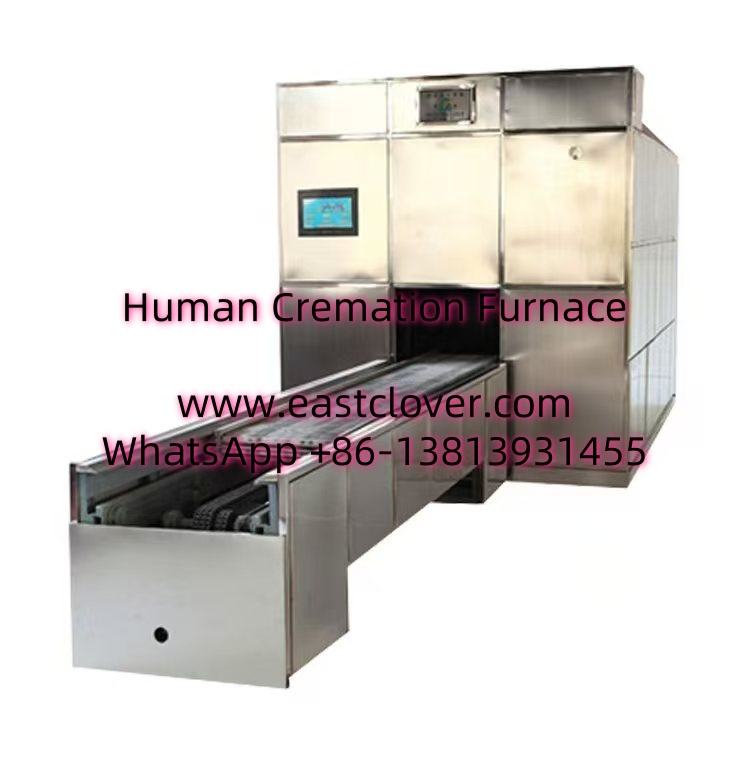Introduction
Traditional cremation practices have long been tied to fixed facilities, but evolving societal needs and technological advancements are driving a shift toward mobile human cremation furnace units. These portable systems offer flexibility, efficiency, and accessibility, addressing challenges such as overcrowded cemeteries, environmental concerns, and emergency response requirements. As global populations grow and urbanization intensifies, the demand for innovative cremation solutions is rising, creating opportunities for manufacturers and exporters of mobile units.
Global Demand for Mobile Cremation Solutions
Factors Driving Demand
- Urbanization: Limited land in cities makes traditional burial impractical, increasing reliance on cremation.
- Disaster Management: Mobile units are critical during pandemics, natural disasters, or conflicts for rapid, dignified remains processing.
- Environmental Regulations: Stricter emissions standards push adoption of eco-friendly cremation technologies.
- Cultural Shifts: Growing acceptance of cremation in regions with historically low rates, such as parts of Europe and Asia.
Key Regions
Asia-Pacific: High population density in countries like India and Japan fuels demand. India’s Hindu majority, which traditionally practices cremation, seeks cost-effective solutions.
Europe: Aging populations and limited burial space drive interest. Germany and the UK are early adopters of mobile units for rural and temporary use.
North America: Rising cremation rates (over 50% in the U.S.) and demand for disaster-ready infrastructure create opportunities.
Africa: Mobile units address challenges in remote areas and regions affected by health crises like Ebola.
Trends in Mobile Cremation Technology
Technological Advancements
Modern units feature automated controls, reduced energy consumption, and multi-fuel capabilities (LPG, electricity, biofuels). Advanced filtration systems minimize particulate emissions, aligning with global sustainability goals.
Sustainability
Manufacturers prioritize energy efficiency and carbon footprint reduction. Solar-powered units and heat recovery systems are emerging, appealing to environmentally conscious markets.
Digital Integration
IoT-enabled sensors monitor performance in real time, enabling predictive maintenance and remote troubleshooting. This reduces downtime and enhances reliability for export clients.
Export Market Opportunities
Emerging Markets
Countries with underdeveloped cremation infrastructure, such as Indonesia and Nigeria, present untapped potential. Exporters can collaborate with local governments and NGOs to address public health needs.
Regulatory Considerations
Compliance with international standards (e.g., EU’s CE marking) and local emissions laws is critical. Customizing units to meet regional requirements enhances market entry success.
Strategic Partnerships
Joint ventures with funeral service providers or healthcare organizations facilitate distribution and build trust in new markets. Training programs for operators also add value.
Challenges in the Export Market
- Cultural Resistance: In regions where burial is deeply rooted, education campaigns are needed to promote cremation benefits.
- Logistical Complexity: Transporting heavy machinery requires robust supply chains and knowledge of import/export regulations.
- High Initial Costs: Affordability remains a barrier in low-income countries; financing models or leasing options may help.
www.southclover.com
The global demand for mobile human cremation furnace units is poised for growth, driven by urbanization, environmental policies, and crisis preparedness. Exporters who innovate in sustainability, adapt to regional needs, and navigate regulatory landscapes will capitalize on emerging opportunities. As societies worldwide rethink end-of-life practices, mobile cremation solutions offer a pragmatic and scalable answer to 21st-century challenges.
FAQs
What is a mobile human cremation furnace unit?
A portable system designed to perform cremations at varying locations, often used in emergencies, remote areas, or regions lacking fixed facilities.
How do mobile units compare environmentally to traditional cremation?
Advanced models feature emission controls and energy-efficient designs, reducing their environmental impact compared to older, fixed systems.
Which countries are key importers of mobile cremation units?
India, Japan, Germany, and the U.S. are major markets. Emerging demand is seen in Southeast Asia and Sub-Saharan Africa.
Can these units be customized for cultural practices?
Yes. Manufacturers often modify designs to accommodate religious rituals, such as extended pre-cremation ceremonies or ash collection preferences.
What are the main barriers to exporting mobile cremation units?
High costs, cultural preferences for burial, and complex logistics are common challenges. Strategic partnerships and financing options can mitigate these issues.

Comments are closed